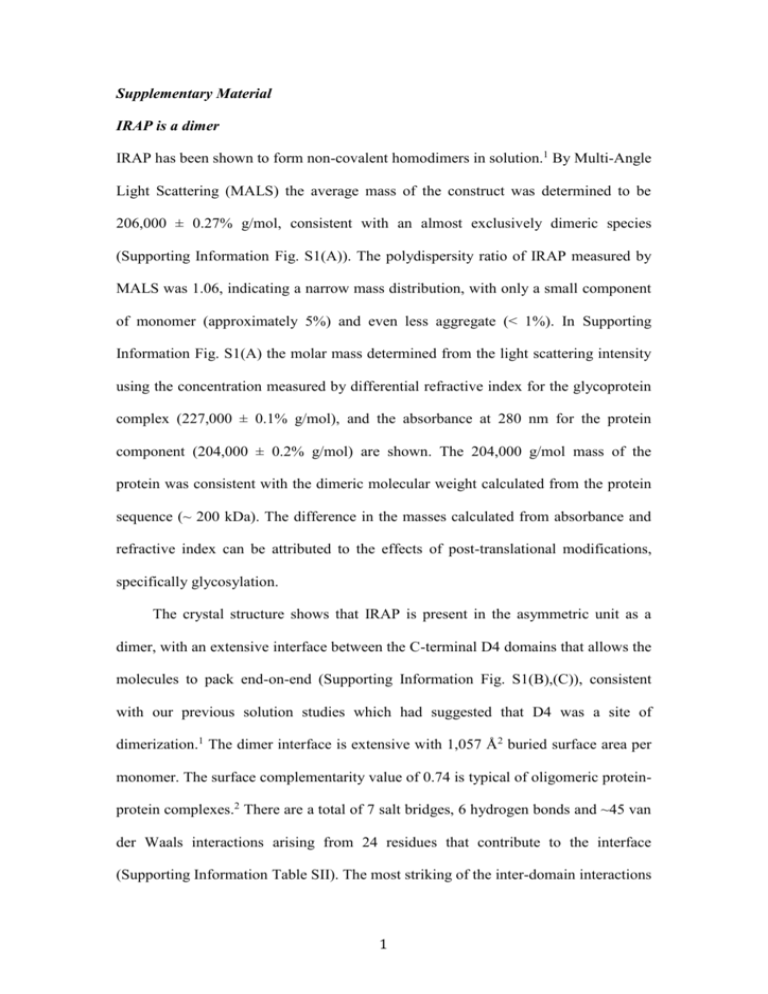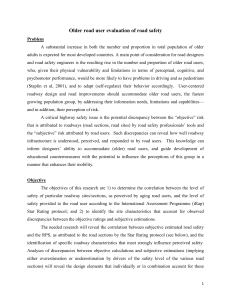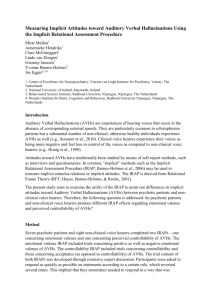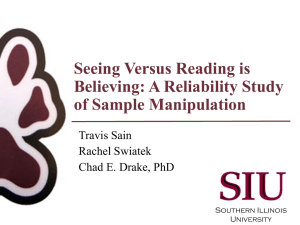pro2604-sup-0009-suppinfo1
advertisement

Supplementary Material IRAP is a dimer IRAP has been shown to form non-covalent homodimers in solution.1 By Multi-Angle Light Scattering (MALS) the average mass of the construct was determined to be 206,000 ± 0.27% g/mol, consistent with an almost exclusively dimeric species (Supporting Information Fig. S1(A)). The polydispersity ratio of IRAP measured by MALS was 1.06, indicating a narrow mass distribution, with only a small component of monomer (approximately 5%) and even less aggregate (< 1%). In Supporting Information Fig. S1(A) the molar mass determined from the light scattering intensity using the concentration measured by differential refractive index for the glycoprotein complex (227,000 ± 0.1% g/mol), and the absorbance at 280 nm for the protein component (204,000 ± 0.2% g/mol) are shown. The 204,000 g/mol mass of the protein was consistent with the dimeric molecular weight calculated from the protein sequence (~ 200 kDa). The difference in the masses calculated from absorbance and refractive index can be attributed to the effects of post-translational modifications, specifically glycosylation. The crystal structure shows that IRAP is present in the asymmetric unit as a dimer, with an extensive interface between the C-terminal D4 domains that allows the molecules to pack end-on-end (Supporting Information Fig. S1(B),(C)), consistent with our previous solution studies which had suggested that D4 was a site of dimerization.1 The dimer interface is extensive with 1,057 Å2 buried surface area per monomer. The surface complementarity value of 0.74 is typical of oligomeric proteinprotein complexes.2 There are a total of 7 salt bridges, 6 hydrogen bonds and ~45 van der Waals interactions arising from 24 residues that contribute to the interface (Supporting Information Table SII). The most striking of the inter-domain interactions 1 in the IRAP dimer is Arg 904 that is located on a loop between α-helices 19 and 20 and protrudes from the surface of each monomer to 'clasp' the other (Supporting Information Fig. S1(C)). In Molecule A Arg904 forms a salt bridge to Glu780 of Molecule B (2.7 Å) whereas in Molecule B Arg904 forms a bifurcated salt bridge to Glu901 and Glu780 of Molecule A (both 2.9 Å). Additional interactions in this region are formed between the side-chain of Lys911 from each molecule and the backbone carbonyl group of Gly783 of the opposing molecule (3.3 Å and 2.7 Å respectively). Extensive contacts are also made between the anti-parallel α-helices 22 and 24 of both molecules that lie flat and perpendicular against each other. Here salt bridges are formed between the side-chain of Lys946 from each molecule to the side-chain of Glu982 from the opposing molecule (3.1 Å and 3.3 Å), the side-chain Glu947 from each molecule to the side-chain of Thr976 from the opposing molecule (both 3.1 Å), and the side-chain His979 from each molecule to the side-chain of Asp943 from the opposing molecule (3.5 Å and 3.4 Å). Two hydrogen bonds are formed between the side-chain of Tyr907 from Molecule A to the backbone carbonyl group of both Leu782 and Gly783 from Molecule B (3.2 Å and 3.5 Å respectively). The equivalent Tyr in Molecule B does not form these bonds as the backbone carbonyl groups are orientated in a direction that encourages the formation of intramolecular hydrogen bonds. Previous studies have suggested dimerization contacts might also exist between D1 + D2 and D4.1 The extensive intramolecular interactions between D1 + D2 and D4 seen in the crystal structure, where there is a large interface of 1,048 Å2, may provide a basis for such heterodimerization in solution. The primary contributing factor to this intramolecular interface is a helix-helix interaction between α-helix 5, located in D2, that lies parallel to helices 11, 13, and 15 that are located in D4 and 2 contributes 7 of the 8 hydrogen bonds which are observed between D1 + D2 and D4 (Supporting Information Table SII). Signaling events have been associated with activation of IRAP by its peptide ligands but the underlying pathways are poorly understood.3 In order to see whether the IRAP dimer is consistent with a possible cell surface signaling complex we modeled the intact dimer including the juxtamembrane and transmembrane regions that are missing from the crystal structure (Supporting Information Fig. S1(D)). The modeling suggests that at the membrane surface the juxtamembrane region termini (i.e. Leu160 in each chain) are 90 Å apart, seemingly too far apart for any proteins bound on the cytoplasmic tails of IRAP to interact with each other. Furthermore, the active sites of the two monomers are also well separated (Zn to Zn distance of 78.5 Å) and there is no published kinetic evidence of any cooperativity between the two sites. Analyses below suggest IRAP may adopt a number of conformational states, but in all these cases the distances between the cytoplasmic tails remains large: between 72 Å (fully closed conformation) and 118 Å (fully open conformation). In summary, it appears unlikely that IRAP can signal in the way that well studied dimeric cell surface receptors are thought to signal. IRAP catalytic mechanism Based on the IRAP structure described here, and by analogy with other M1 aminopeptidases, a likely mechanism of catalysis can be presented (Supporting Information Fig. S3(E)). Peptide substrates bind to the peptide-binding groove (see below) in the open form of the enzyme with key interactions in the S1 pocket governing specificity. The next step in catalysis is associated with a rotation in domain D3 such that D4 forms a cap over the active site in D2. It seems likely that in 3 the absence of ligand IRAP fluctuates between open and closed states in solution and that peptide binding stabilizes the closed form. In this closed state Tyr549 points towards the catalytic zinc ion. The scissile amide bond at the N-terminal end of the peptide substrate is attached by the metal-bound water to form a tetrahedral intermediate stabilized by interactions in the active site. The intermediate collapses with a proton transfer to generate either a free amino acid in the case of linear peptide substrates or, in the case of cyclized peptides, a cleaved peptide product. The product is released upon conversion of the enzyme back to an open state. Molecular basis for IRAP recognition of linear peptides Linear peptide recognition by IRAP has previously been examined in some detail 4-9 and the importance of several residues lining the active site in both substrate recognition and catalysis studied by mutagenesis.8,10-12 Compared to the cyclic peptides, many linear peptides are much better IRAP substrates. For example, the neuropeptide Met-enkephalin has been shown to be cleaved by IRAP with a Km value of 0.9 mM and is much more rapidly degraded than cyclic substrates.13-15 Docking of Met-enkephalin into the IRAP crystal structure results in a bound conformation that is consistent with enzymatic cleavage of the N-terminal amino acid (Fig. 3(C)). The peptide sits with the N-terminal tyrosine residue pointing out towards the exterior of the protein and the first peptide bond positioned over the zinc ion, stabilized by interactions with the carbonyl oxygen and N-terminal ammonium which also interacts with Glu 431 from the GAMEN motif (Fig. 3(C)). The rest of the peptide lies along a groove adjacent to the GAMEN loop defined by residues Tyr272, Gln293, Glu295, Pro296, Phe425, Glu426, Ala427, Gly428, Ala429, Met430, Glu431, Arg439, Glu441, Thr442, Ile461, His464, Glu465, His468, Glu487, Phe544, Tyr549, Gln922, 4 Lys923 and Tyr961. A key interaction observed in the docked conformation is between Phe4 of Met-enkephalin and Arg439 of IRAP. Arg439, a strictly conserved residue in the M1 family of aminopeptidases, protrudes from beneath the GAMEN loop and provides both a salt bridge with the C-terminus and a cation-π interaction with the aromatic side-chain of Phe4 from the peptide. The large internal cavity in IRAP remains effectively empty in the presence of small peptides such as Metenkephalin, leaving substantial room for IRAP to enclose longer peptide substrates. Indeed it has been shown that IRAP can process peptides of at least 15 residues9 which would require a much more extensive binding site. Materials and methods SEC-MALS Size exclusion chromatography-multi-angle light scattering (SEC-MALS) was carried out using a Tosoh TSKgel SuperSW2000 4.6*300 column equilibrated in a buffer containing 25 mM Tris-HCl, pH 7.2, 150 mM NaCl. 0.5 µg of IRAP was run on the column at a flow rate of 0.35 ml/min using a Shimadzu LC-20AD isocratic HPLC coupled to a Dawn Heleos MALS detector and an Optilab T-rEX refractive index detector (Wyatt Technology, CA). The oligomeric state of IRAP was determined according to the three-detector method16 using ASTRA 5 software (Wyatt Technologies, CA). References 1. Ascher DB, Cromer BA, Morton CJ, Volitakis I, Cherny RA, Albiston AL, Chai SY, Parker MW (2011) Regulation of insulin-regulated membrane aminopeptidase activity by its C-terminal domain. Biochemistry 50:2611-2622. 5 2. Lawrence MC, Colman PM (1993) Shape complementarity at protein/protein interfaces. J Mol Biol 234:946-950. 3. Albiston AL, Mustafa T, McDowall SG, Mendelsohn FA, Lee J, Chai SY (2003) AT4 receptor is insulin-regulated membrane aminopeptidase: potential mechanisms of memory enhancement. Trends Endrocrinol Metab.14:72-77. 4. Lee J, Mustafa T, McDowall SG, Mendelsohn FA, Brennan M, LL, Chai SY (2003) Structure-activity study of LVV-hemorphin-7: angiotensin AT4 receptor ligand and inhibitor of insulin-regulated aminopeptidase. J Pharmacol Exper Ther 305:205-211. 5. Sardinia MF, Hanesworth JM, Krebs LT, Harding JW (1993) AT4 receptor binding characteristics: D-amino acid- and glycine-substituted peptides. Peptides 14:949-954. 6. Sardinia MF, Hanesworth JM, Krishnan F, Harding JW (1994) AT4 receptor structure-binding relationship: N-terminal-modified angiotensin IV analogues. Peptides 15:1399-1406. 7. Krishnan R, Hanesworth JM, Wright JW, Harding JW (1999) Structure-binding studies of the adrenal AT4 receptor: analysis of position two- and threemodified angiotensin IV analogs. Peptides 20:915–920. 8. Zervoudi E, Papakyriakou A, Georgiadou D, Evnouchidou I, Gajda A, Poreba M, Salvesen GS, Drag M, Hattori A, Swevers L, Vourloumis D, Stratikos E (2011). Probing the S1 specificity pocket of the aminopeptidases that generate antigenic peptides. Biochem J 435:411-420. 9. Georgiadou D, Hearn A, Evnouchidou I, Chroni A, Leondiadis L, York IA, Rock KL, Stratikos E (2010) Placenta leucine aminopeptidase efficiently generates mature antigenic peptides in vitro but in patterns distinct from 6 endoplasmic reticulum aminopeptidase 1. J Immunol 185:1584-1592. 10. Laustsen PG, Vang S, Kristensen T (2001) Mutational analysis of the active site of human insulin-regulated aminopeptidase. Eur J Biochem 268:98-104. 11. Ye S, Chai SY, Lew RA, Ascher DB, Morton CJ, Parker MW, Albiston AL (2008) Identification of modulating residues defining the catalytic cleft of insulin-regulated aminopeptidase. Biochem. Cell Biol 86:251-261. 12. Albiston AL, Pham V, Ye S, Ng HL, Lew RA, Thompson PE, Holien JK, Morton CJ, Parker MW, Chai SY (2010) Phenylalanine-544 plays a key role in substrate and inhibitor binding by providing a hydrophobic packing point at the active site of insulin-regulated aminopeptidase. Mol Pharmacol 78:600-607. 13. Lew RA, Mustafa T, Ye S, McDowall SG, Chai SY, Albiston AL (2003) Angiotensin AT4 ligands are potent, competitive inhibitors of insulin regulated aminopeptidase (IRAP). J Neurochem 86:344-350. 14. Matsumoto H, Hattori A, Mizutani S, Tsujimoto M Cleavage of peptide hormones by placental leucine aminopeptidase/oxytocinase. In: Mizutani S, Turner AJ, Nomura S, Ino K Eds. (2001) Cell-Surface Aminopeptidases: Basic and Clinical Aspects. Elsevier Science BV, Amsterdam, pp 295-299. 15. Wallis MG, Lankford MF, Keller SR (2007) Vasopressin is a physiological substrate for the insulin-regulated aminopeptidase IRAP. Amer J Physiol Endocrinol Metab 293:E1092-E1102. 16. Hayashi Y, Matsui H, Takagi T (1989) Membrane protein molecular weight determined by low-angle laser light-scattering photometry coupled with highperformance gel chromatography. Methods Enzymol 172:514-528. 7 17. Birtley JR, Saridakis E, Stratikos E, Mavridis IM (2012) The crystal structure of human endoplasmic reticulum aminopeptidase 2 reveals the atomic basis for distinct roles in antigen processing. Biochemistry 51:286-295. 18. Kochan G, Krojer T, Harvey D, Fischer R, Chen L, Vollmar M, von Delft F, Kavanagh KL, Brown MA, Bowness P, Wordsworth P, Kessler BM, Oppermann U (2011) Crystal structures of the endoplasmic reticulum aminopeptidase-1 (ERAP1) reveal the molecular basis for N-terminal peptide trimming. Proc Natl Acad Sci USA 108:7745-7750. 19. Nguyen TT, Chang SC, Evnouchidou I, York IA, Rock KL, Goldberg AL, Stratikos E, Stern LJ (2011) Structural basis for antigenic peptide precursor processing by the endoplasmic reticulum aminopeptidase ERAP1. Nat Struct Mol Biol 18:604-613. 20. Wong AHM, Zhou D, Rini JM (2012) The X-ray crystal structure of human aminopeptidase N reveals a novel dimer and the basis for peptide processing. J Biol Chem 287:36804-36814. 21. Wang Y, Liu C, Lin YL, Li F (2013) Structural insights into central hypertension regulation by human aminopeptidase A. J Biol Chem 288:2563825645. 22. Thunnissen MM, Nordlund P, Haeggstrom JZ (2001) Crystal structure of human leukotriene A(4) hydrolase, a bifuntional enzyme in inflammation. Nat Struct Biol 8:131-135. 23. Albiston AL, Morton CJ, Ng HL, Pham V, Yeatman HR, Ye S, Fernando RN, De Bundel D, Ascher DB, Mendelsohn FA, Parker MW, Chai SY (2008) Identification and characterization of a new cognitive enhancer based on inhibition of insulin-regulated aminopeptidase. FASEB J 22:4209-4217. 8 Figure legends Figure S1. IRAP is a dimer. (A) SEC-MALS analysis. IRAP was monitored by normalized differential refractive index (black line) and absorbance at 280 nm versus time. Molar mass was analyzed by multi-angle light scattering following the total mass by differential refractive index (blue points), and protein mass by absorbance at 280 nm (grey points). The molar mass contributed by glycosylation is plotted as the difference between the total mass and the mass of the protein (orange points). (B) Crystal structure of the IRAP dimer. (C) Arg904 interaction at the dimer interface. (D) Cartoon model of the intact IRAP dimer, based on the crystal structure, bound to the plasma membrane. Figure S2. Comparison of the IRAP monomer to related human aminopeptidases. Same domain colors as in shown in Fig. 1. (A) IRAP. (B) ERAP2 (PDB id: 3SE6).17 (C) ERAP1 closed form (PDB id: 2YD0).18,19 (D) APN (PDB id: 4FYQ).20 (E) APA (PDB id: 4KX7).21 (F) LTA4H (PDB id: 3B7T).22 Figure S3. Catalytic mechanism of IRAP. (A) Stereo view of the final 2Fo – Fc electron density about the zinc ion derived from IRAP crystals grown in the presence of Ang-IV. The Zn ion is shown as a green sphere and an alanine residue has been fitted into the map as a metal ligand. Contour level set to 1. (B) Stereo view of the final 2Fo – Fc electron density about the zinc ion derived from IRAP crystals grown in the presence of 5,7-dichloro-2-[(dimethylamino)methyl]-8-quinolinol. A lysine residue has been fitted into the map as a metal ligand. Contour level set to 1. (C) Close-up view of active site. (D) Superposition of the active sites of related aminopeptidases. IRAP is yellow, ERAP1 closed form is red, ERAP1 open form is 9 blue, ERAP2 is orange, APN is purple, APA is silver and LTA4H is green. (E) Cartoon of postulated catalytic mechanism based on related M1 aminopeptidases. Figure S4. Close up view of the catalytic Tyr549 in IRAP. The IRAP structure is shown in yellow ribbon and stick with the active site alanine bound to the zinc ion shown as a green sphere. Electron density derived from a 2Fo-Fc simulating annealing omit map is shown in green hash, contoured at 0.8. The open (blue) and closed (red) forms of ERAP118,19 have been superimposed and the corresponding tyrosine residue from those structures is shown. The electron density clearly shows the IRAP tyrosine conformation lies somewhere between the conformations seen in the ERAP1 structures. Figure S5. Specificity of the S1 pocket. Surface representations of the S1 pocket colored by electrostatic potential. (A) IRAP. (B) ERAP1 closed form (PDB id: 2YD0).18,19 (C) ERAP2 (PDB id: 3SE6).17 (D) APN (PDB id: 4FYQ).20 (E) APA (PDB id: 4KX7).21 (F) LTA4H (PDB id: 3B7T).22 10






